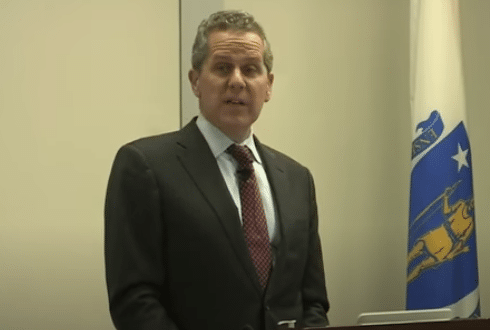US regulators are finally discussing the subject of fiat-backed digital assets, popularly known as stablecoins.
According to Federal Reserve Vice Chair for Supervision Michael Barr, it’s imperative that stablecoins also fall under the supervisory oversight of the government.
Presenting his idea at a Washington DC-hosted conference, Barr stated unequivocally that the ability of a stablecoin to be pegged to any government-issued currency makes it private money.
Furthermore, these digitized fiat currencies serve as means of payment and value storage mechanisms, meaning they are borrowing the trust of the central bank.
Barr, who was appointed by President Biden as the Federal Reserve’s top bank cop, has argued that stablecoins must be regulated in light of these strong indicators.
Expanding on his stance, he noted that it is essential for stablecoins to be subject to a proper prudential financial framework to avoid posing risks to financial stability or the integrity of payment systems.
“We also have provided proper guidance to the banks that we supervise on how they should engage with their supervisors when considering use of these products,” Barr added.
Barr’s remarks tie into the growing belief amongst US regulators on the need for a strong handle on the crypto space.
In recent years, calls for appropriate oversight of the fast-growing decentralized economy have echoed through the walls of Washington DC. However, stablecoins have been the least considered.
So far this year, the Feds, which serves as the US equivalent of a central bank, has taken a more cursory look at the potential impact a privately controlled digitized sovereign currency could have on the economy.
To that end, the Federal Reserve launched a new set of guardrails specifically targeted at crypto assets and stablecoins in August this year.
In its set of rules, the Feds announced the launch of a new program codenamed SR 23-7, which stands for its Novel Activities Supervision Program.
In this new setting, the Feds said it seeks to enhance the supervision of novel technologies utilized by banking institutions under its purview.
These novel technologies targeted crypto assets, blockchain technology, and complex, technology-driven partnerships with non-banking entities to deliver financial services to customers.
Regarding the objectives of the SR 23-7 program, the central bank specified that it would be risk-focused and complementary to existing supervisory guidelines designed to regulate banking activities.
In a related press release, the Federal Reserve stated that banks would not be stopped from participating in stablecoin activities.
However, they would be required to prove to the nation’s lender of last resort that the appropriate safety guards are in place before commencing.
A CBDC Decision Not Yet Made
Barr, who serves as the Vice Chair for Supervision, also touched on the age-long quest for a central bank digital currency (CBDC) in his address.
He stated that the central bank is currently consulting with a broad range of experts on the most robust and appropriate emerging technology that would support a sovereign-backed digital currency.
This research is focused on end-to-end system architecture, security, verification, and tokenization models for CBDCs. However, he stated that no unanimous decision had been made on whether a CBDC should be issued.
The Fed official, however, stated that the decision ultimately lies with the US Congress and White House.
While the US has been reluctant to kickstart a CBDC program, its European counterpart is going full thrust with plans for a digital Euro.
The euro is key to our European unity. A digital euro, existing alongside cash, would future-proof our currency. It would be safe, easy to use and free of charge.
While the decision whether to issue a digital euro will be taken later, we’re now launching the preparation phase. pic.twitter.com/fs81p7otVW
— Christine Lagarde (@Lagarde) October 19, 2023
According to an October 19 tweet on X (formerly Twitter) by European Central Bank (ECB) head Christine Lagarde, the governing council of the ECB has given the green light to kickstart the preparation phase.
Read the full article here













